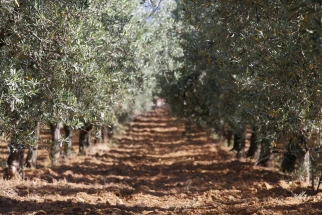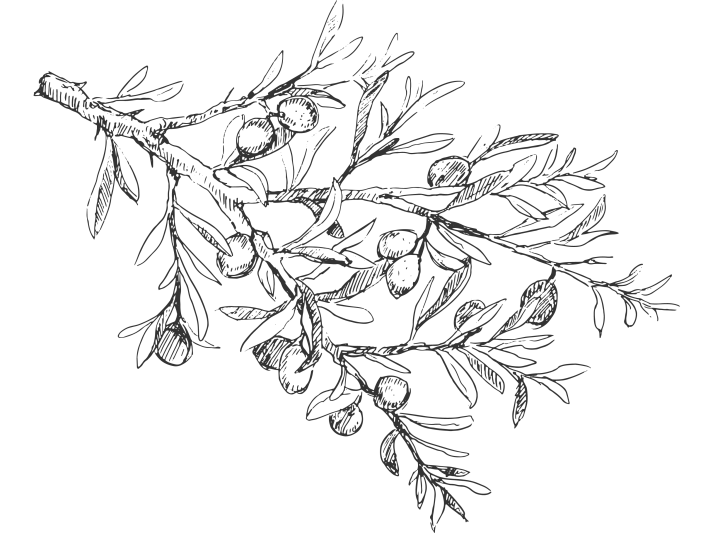
The story and the recipe
Pasta all'Amatriciana
Pasta all'amatriciana is one of our favorite Italian pasta dishes. The dish originates on the border between the Lazio and Abruzzo regions, in the town of Amatrice. The dish is known for its simplicity and rich flavors, which are typical of Italian cuisine.
Order the ingredients here
The history of pasta all'Amatriciana dates back to the 18th century. Originally in the region, the classic Italian recipe pasta alla Gricia was consumed. It was a hearty meal for shepherds who had to walk long distances all day, made from the cheese of their sheep (pecorino) and guanciale (pork jowl). In the 18th century, tomatoes brought from America quickly gained popularity in the region around Naples. Eventually, this new crop also reached Amatrice, and people began to enrich the recipe of alla Grigia with tomatoes. Pasta all’Amatriciana was born.
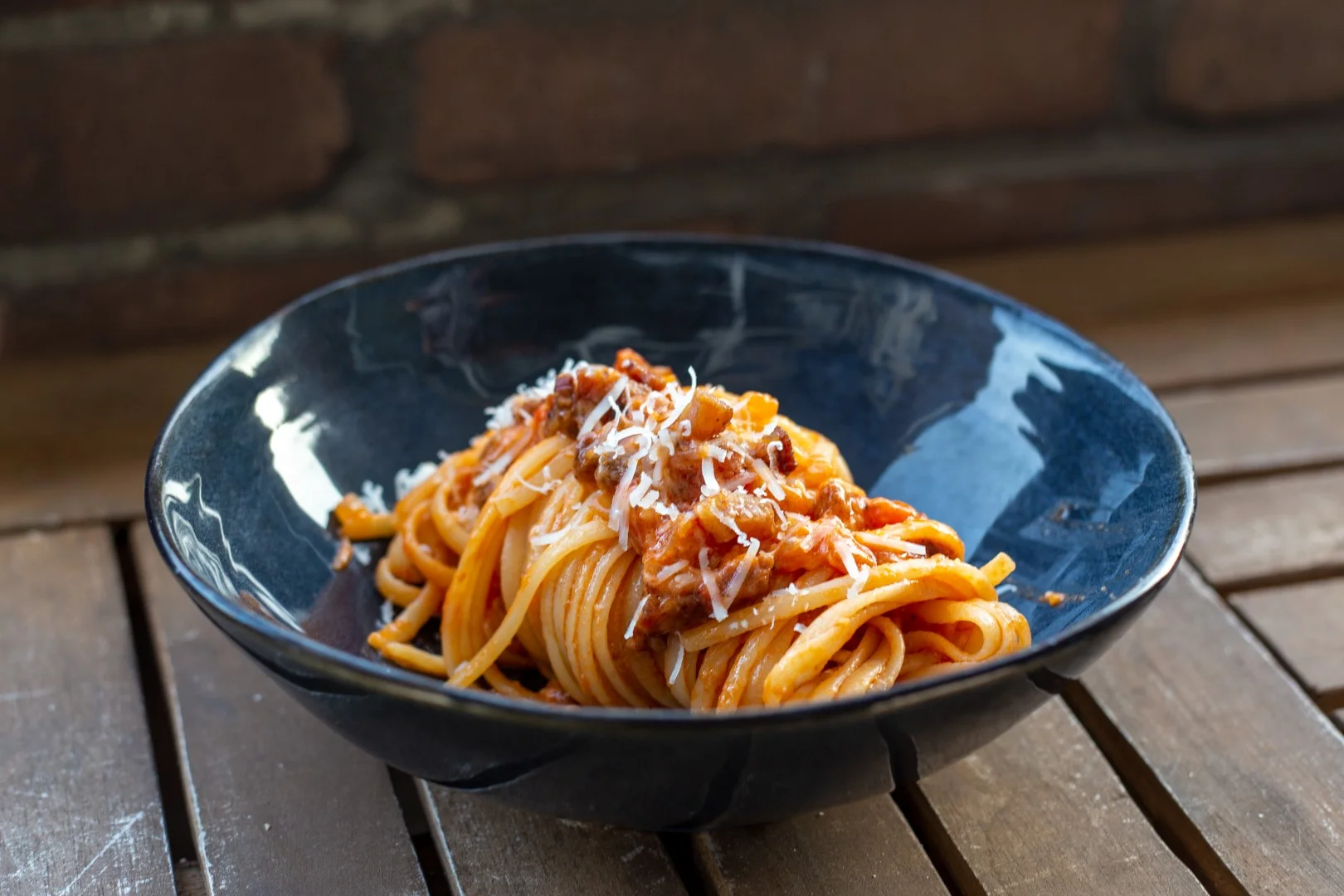
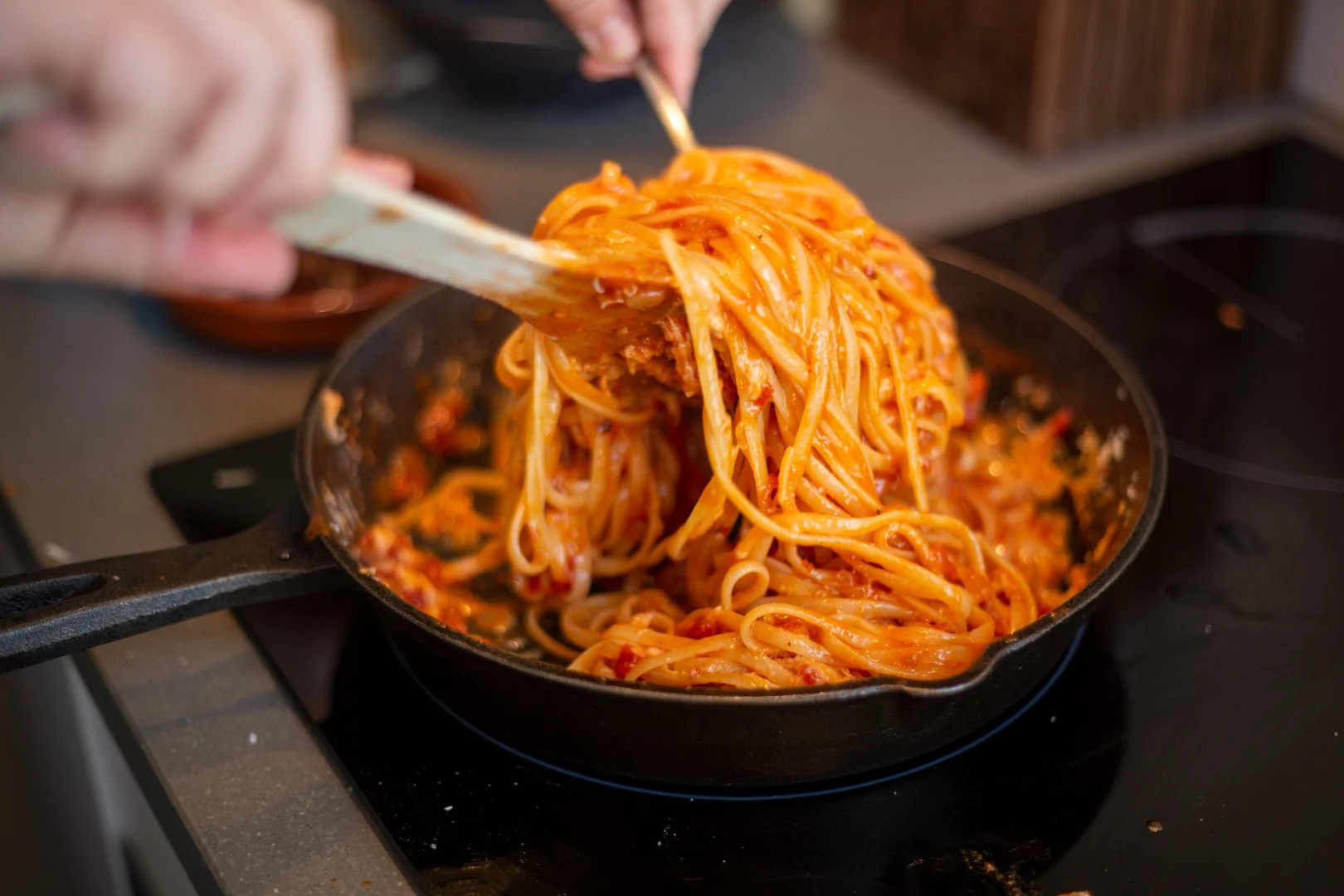
Originally, the residents of Amatrice made their Amatriciana with spaghetti. Due to the annual migration of shepherds between Abruzzo and Lazio (the region where Rome is located), the dish became popular there as well. Some adaptations followed. Romans added onions and made the recipe with bucatini, a pasta shape similar to spaghetti but hollow on the inside. We make our Amatriciana with the extra-long linguine from the Castellano family and Francesco's guanciale, a delightful combination!
Ultimately, spaghetti all'Amatriciana, the original recipe, became national cultural heritage in Italy. The municipality of Amatrice has the official recipe on its website. It describes that the ratio of guanciale to spaghetti should be 1 to 4. They say this ratio is sacred! Although we would never dare to deviate from centuries-old Italian traditions, Francesco's guanciale is so incredibly delicious that we can't help but add a little extra. In our recipe, you'll find a 1 to 3 ratio. Please don't tell the shepherds from Amatrice!

INGREDIENTS
Quantity for 4 people
400 g linguine
125 gr guanciale
400 g peeled tomatoes
100 g pecorino (tip: I buy mine at the cheese stall at the market; the one from the market or the cheese shop is usually tastier!)
1/2 cup dry white wine
1 fresh chili pepper, finely chopped (or a teaspoon of chili flakes)
Optional: one onion, finely chopped (this is how it is eaten in Rome and is my preference; the original recipe from Amatrice is without onion)
salt
Order the ingredients here
METHOD
Cut the guanciale into small cubes. The guanciale can go directly into the pan (preferably a pan with a thick bottom like a cast-iron pan), without oil because enough fat comes out of it. Fry the guanciale over medium-high heat until the cubes are golden brown and crispy (about 5 minutes). Meanwhile, set a pot of water to boil for cooking the pasta.

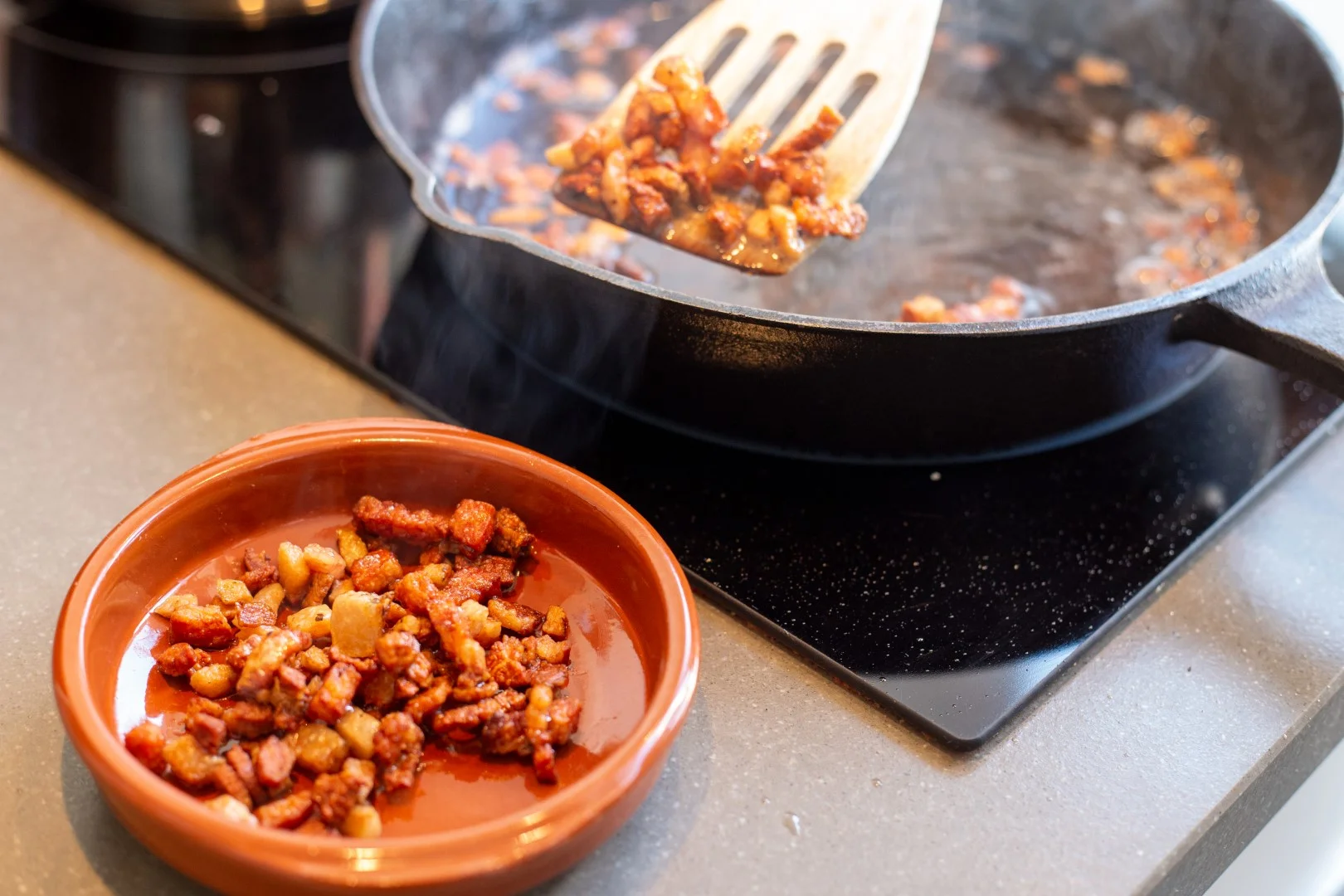
Using a spatula, remove the guanciale cubes from the pan and set them aside in a bowl. The fat from the guanciale should remain in the pan. Reduce the heat and sauté the onion (if you add it) and the chopped chili pepper (or chili flakes) in the fat.
Deglaze the pan with white wine. Bring the wine to a boil while stirring and let it simmer for a while (2 minutes). Then, add the canned peeled tomatoes. Crush the tomatoes and stir to create a coarse red sauce. Reduce the heat and let the sauce simmer (10 - 15 minutes).
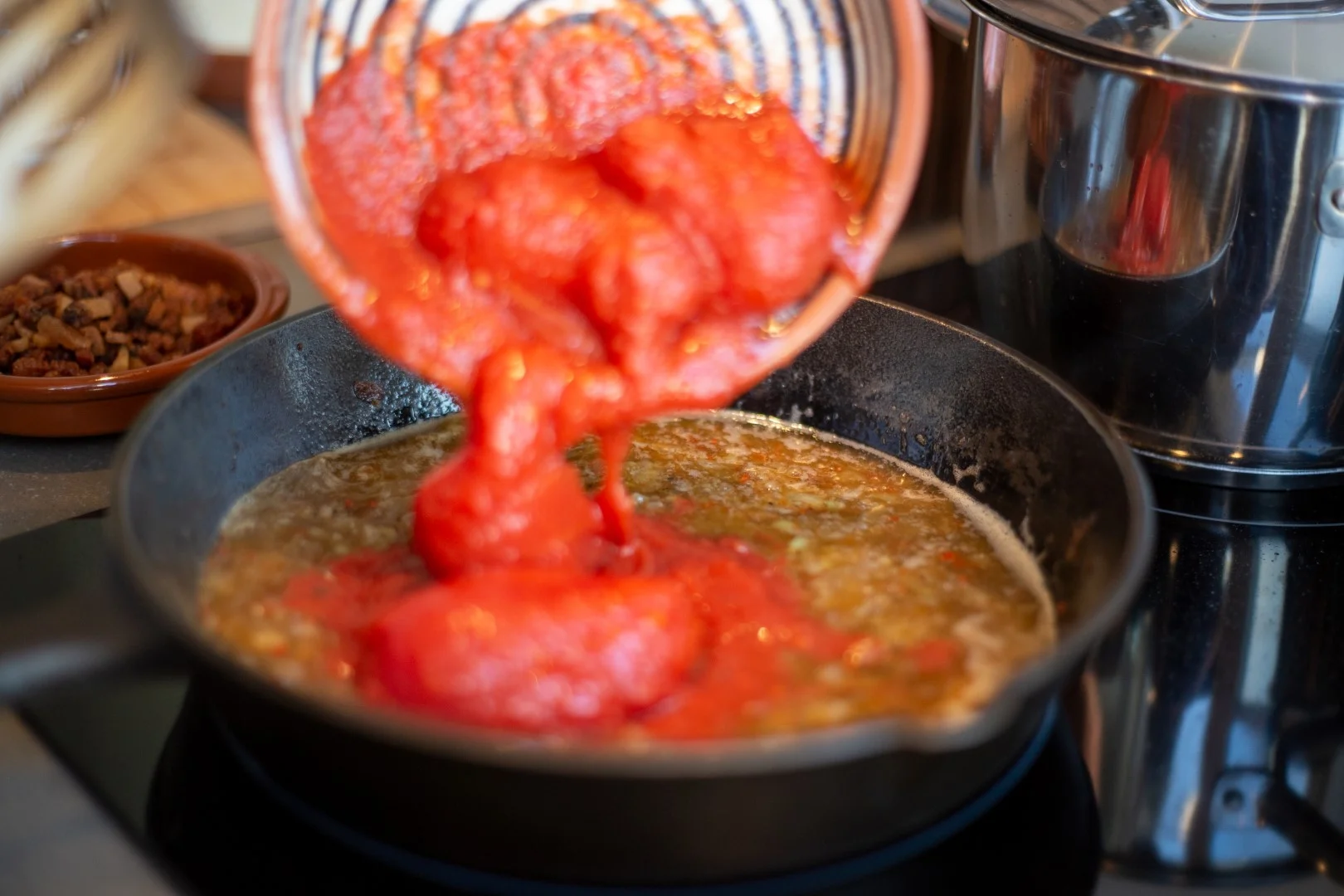
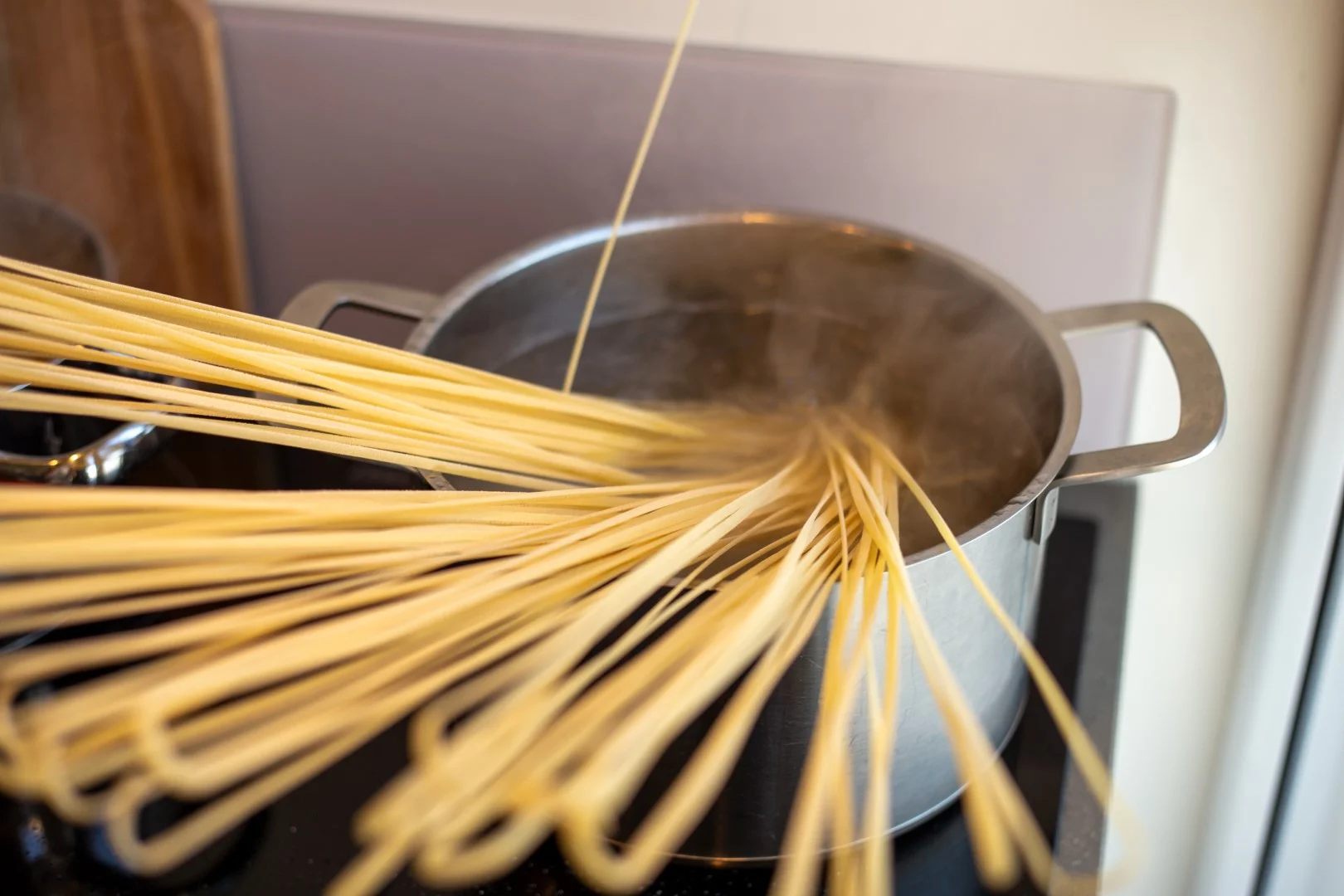
Add plenty of salt to the pasta water. Cook the linguine for two minutes less than the package instructions state. Meanwhile, grate the pecorino with a fine grater. Keep an eye on the pasta sauce. If it seems to be drying out, you can add a splash of pasta water to it.
Reserve a generous cup of pasta water and drain the pasta. Immediately add the pasta to the sauce and stir well but gently so the pasta doesn't break. Gradually add the pasta water to the sauce until the linguine are cooked (2 to 3 minutes, I recognize this by simply tasting!). Turn off the heat and add the pecorino. Stir everything together. Finally, add the crispy guanciale cubes. Mix them into your Amatriciana and serve!
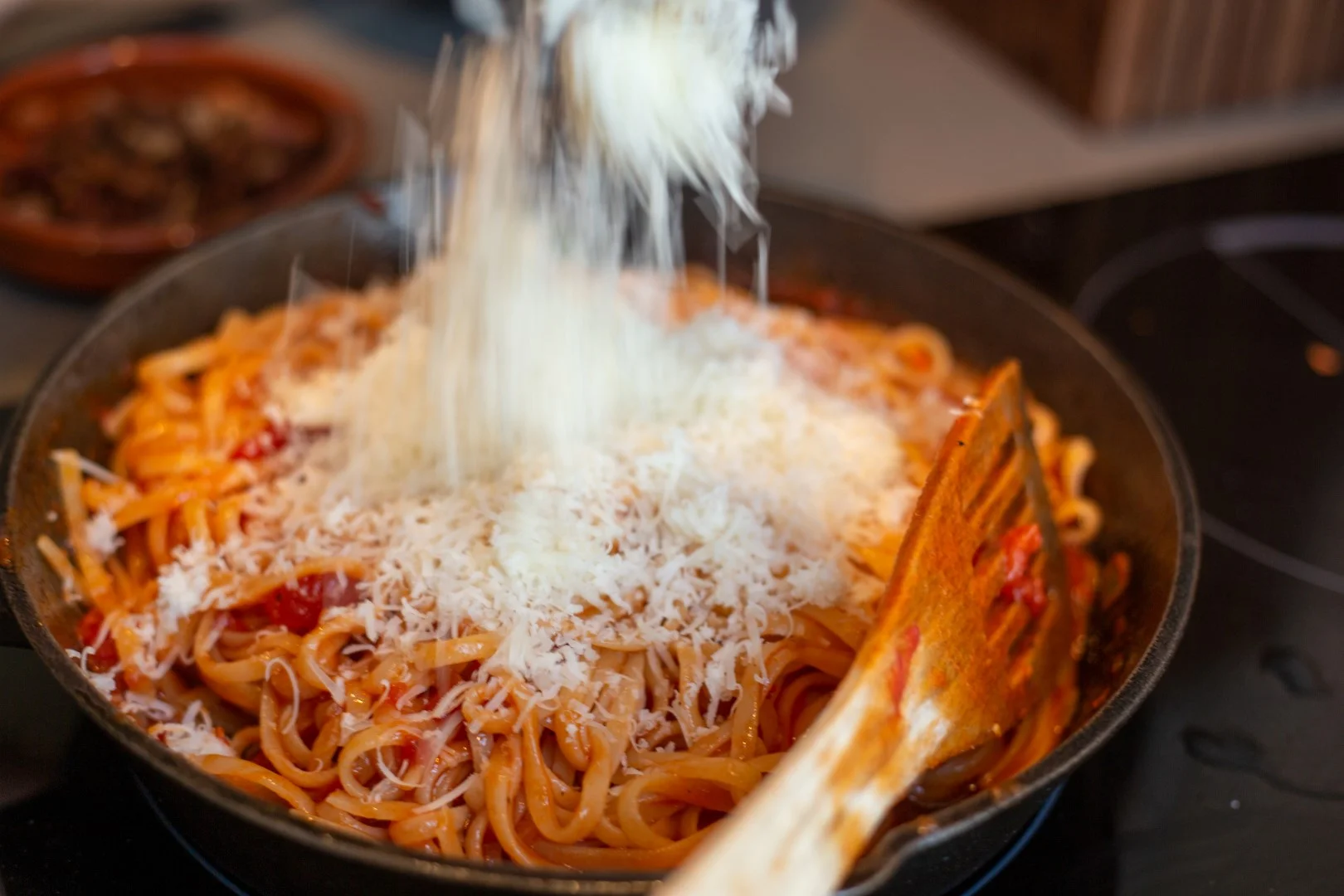


.png?resolution=1024x340&type=webp&quality=90)
.png?resolution=322x0&quality=90&type=webp&background=FFFFFFFF&force_jpg_crop=1)
.jpg?resolution=322x0&quality=90&type=webp&background=FFFFFFFF&force_jpg_crop=1)
